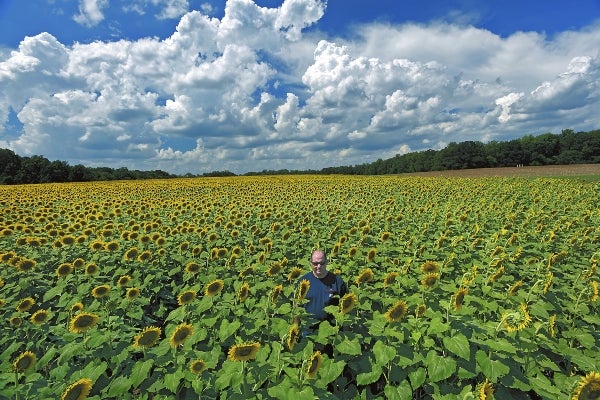Wayne Hinshaw: Sunflowers at research station pretty, useful
Published 12:00 am Thursday, August 18, 2016
Riding out Sherrills Ford Road, you can’t miss the acres and acres of sunflowers in full bloom on the Piedmont Research Station farm property. There are about 17 acres of beautiful, bright-yellow Clearfield Sunflowers, to be exact.
Farm employee Kelly Snider explains that N.C. Commissioner of Agriculture Steve Troxler wanted to start a pollinator program in North Carolina for honeybees, bumblebees and butterflies. In North Carolina, there are around 400 pollinators that are important to our agriculture programs and food supply.
The local research station project started small but has grown much larger this year. The Pollinator Habitat Area project is part of the “Got To Be NC” promotion. The Department of Agriculture and the Department of Transportation have an interest in the program.
Snider points out that farmers can plant sunflowers, buckwheat or canola for good pollinators. A farmer can plant clover in the spring, then buckwheat, and then sunflowers in order to keep a good year-round pollination food supply during the growing season.
The sunflowers have been very popular, with people coming by to see the pretty fields and some stopping to make photographs of the special sight in the county’s farmland.
The research farm is enjoying the beauty and attention that the fields are creating, but that was not the purpose in planting sunflowers.
It was discovered by accident by Kansas State University in 1997 that the Clearfield Sunflower trait was present in some wild sunflowers that were growing in a soybean field in Kansas. Soybeans had been grown on the field for a number of years and sprayed with herbicides to kill the weeds and grass in the field, but these wild sunflowers continued to survive the spraying.
By taking this natural trait in the wild sunflowers and years of development, the Clearfield Sunflower hybrid variety was produced. This variety of sunflower can be planted and sprayed with herbicide to control the weeds and grass, keep the field clear and still produce a cash crop of sunflower seeds and pollinators for important farm insects.
Snider says the Clearfield Sunflowers could be a good future cash crop to add to some farms’ crop rotation in addition to “cleaning up the field of weeds and grass.”
The sunflowers will be harvested by combine here, and the seeds will be cleaned and distributed to all the North Carolina research farms to be used in their Pollinator Habitat Areas. If the Department of Transportation wants, they too can use some of the seeds to plant along the highways of North Carolina for beauty and as food for pollinators.
In the future, farmers might plant fields of sunflower seeds to market as cash crops for wildlife feed for birds and other animals. The black seeds are a popular food in nature.
No one at the Piedmont Research Station is talking about the seeds being used for human consumption. However, Health Canada has found no objection to using the hybrid seeds in baked goods or eating the raw seeds as a snack food. Time will tell the value of the seeds in our human diets.





